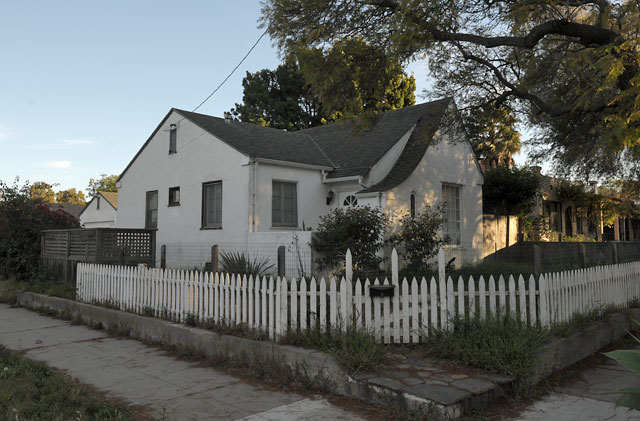
Precedent was set in Santa Barbara last week when, for the first time as far as anyone can remember,* one of its civil servants was fined for breaching the Political Reform Act as the Fair Political Practices Commission (FPPC) levied a $3,500 penalty against former architectural review board (ABR) member Clay Aurell for a conflict of interest violation.
Aurell had, according to the decision, pressured city staff to approve a project for one of his own clients. Because he stood to gain personally from said approval, his contact with staff was deemed inappropriate and, as stated in the decision, “one of the more serious violations of the [Political Reform] Act because it may create the appearance that a governmental decision was made on the basis of a public official’s financial interest.”
The FPPC is a regulatory and enforcement body created by the Political Reform Act that was passed by voters as a ballot initiative in 1974 to prevent government corruption. The maximum penalty for Aurell’s violation is $5,000, but the FPPC exercised some leniency because he cooperated with their investigation and has no prior violations.
Aurell told The Santa Barbara Independent that he paid the fine because a member of the FPPC warned him the alternative would be a several months long investigation, and he preferred to get on with his life. It is also “categorically false,” he said, that he was hired onto the project after his client sacked her first architect because he was an ABR member, but rather because she liked his firm’s work.
The project in question is an addition to a property at 903 West Mission Street. Some neighbors of the property objected to it because its contemporary-industrial design, which included exposed metal siding, stuck out like the proverbial sore thumb in an area of the city dominated by quaint, historical single-family homes.
As Aurell explained it, “There was a really nice woman who was doing a house. Her neighbor didn’t like the house. So her neighbor did everything in her power to stop her other neighbor from building her house. As an ABR member, I never represented [my client] in front of the board. I never had any conversations with the ABR.”
Contact with city planners, Aurell said, was mostly in his role as the principal architect on the project; if he had known his actions could lead to a violation, he would have refrained. Aurell did eventually step down from the ABR after it approved plans for the new building — which had undergone significant change — on May 16, 2011.
Pam Brandon, next-door-neighbor to the Mission Street property, however, obtained emails exchanged between Aurell and city staffers (through a Public Records Act request), providing the ammunition she needed to file a complaint with the FPPC. In an email to planner Roxanne Milazzo, who in a preliminary reported dated April 6, 2010 suggested that staff would not support the project, Aurell wrote, “I feel like we are not being treated fairly and I hope you will reconsider.”
In an email dated May 4, Aurell wrote, “We met a few weeks ago to look at the mod changes … and discuss the overall approach for the site planning. … You told me that day, that you would make a note in the computer that staff was generally in support of the direction/resolution. This was not in the computer system today.” Aurell also wrote to planner Kelly Brodison on March 21, 2011, asking her to intervene on his behalf among city staff before an ABR meeting that day.
“It was a pretty clear cut violation, said Wiley. “There were emails showing that Clay contacted staff and you can’t do that if you’re conflicted out. It’s not enough that you don’t participate in votes, that you step down from commission deliberations—you can’t lobby city staff either and he did.” Wiley explained that the city holds annual meetings for boards and commissions in which they receive training on conflict of interest, and that he also sends out a yearly memo explaining the “dos and don’ts.”
Despite the alleged ethical breaches that took place during the approval process, on August 23, 2011, City Council denied Brandon’s second appeal of the ABR approval, a decision that cannot be reversed, according to City Attorney Steve Wiley.
And the case of Aurell reflects broader ethical questions which Councilmember Dale Francisco — who was critical of Aurell during the August hearing — posed in an email to The Independent: “How do you create a fair and objective design review board in a small town where the design review board members themselves will inevitably be bringing their own projects before the board? (And where the planning staff’s paychecks are funded by permit fees?) It’s a tough problem — I’ve thought a lot about it, and I don’t see any easy answers.”
*Tara Stock, spokesperson for the FPPC, said she could not definitively state that no Santa Barbara official had ever been fined previously, but she could not find a case. Nor could the FPPC’s chief of enforcement recall one. Nor, for that matter, could the most wizened of wizened veterans on the The Santa Barbara Independent staff.



